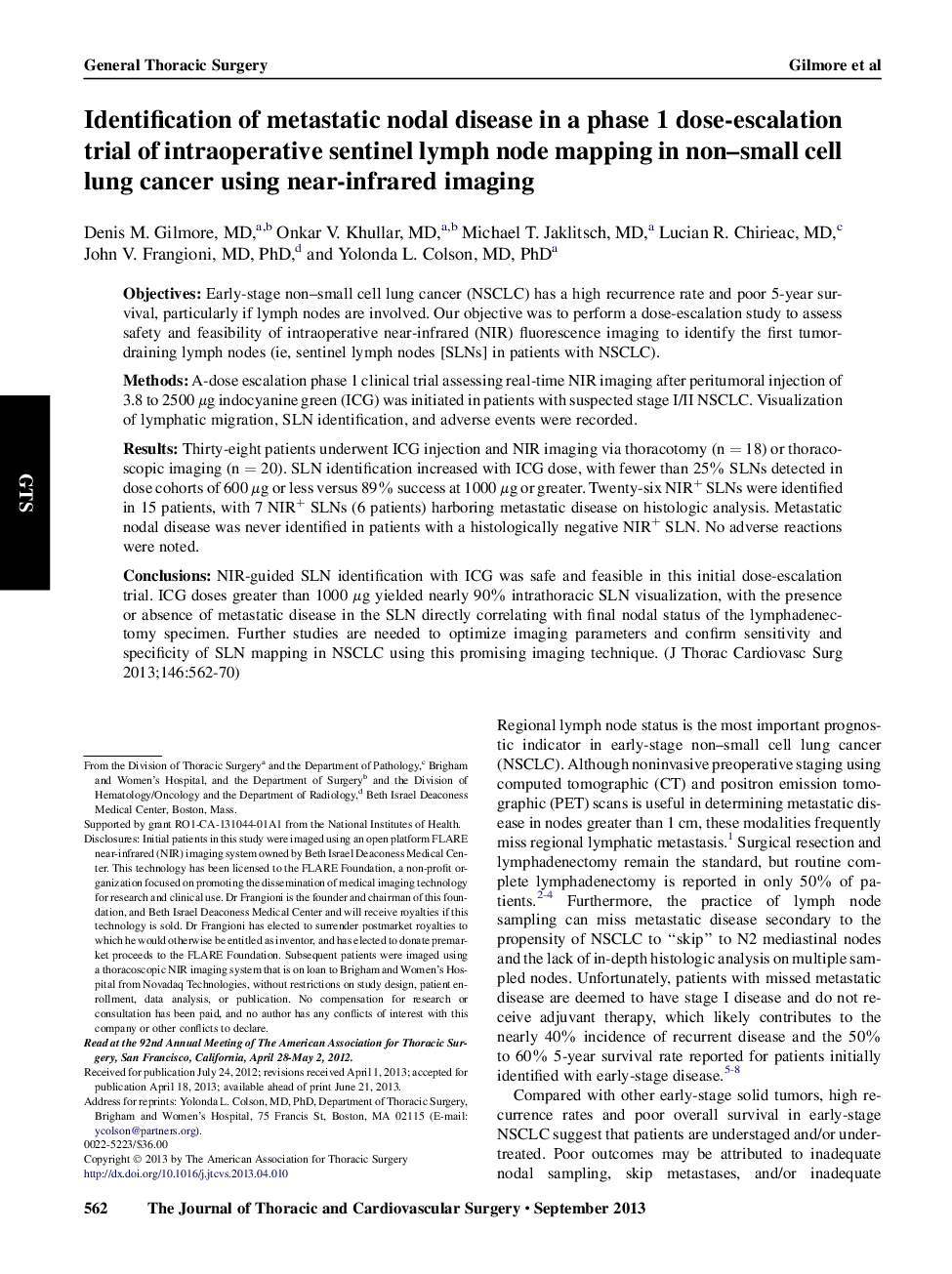| Article ID | Journal | Published Year | Pages | File Type |
|---|---|---|---|---|
| 5990117 | The Journal of Thoracic and Cardiovascular Surgery | 2013 | 9 Pages |
ObjectivesEarly-stage non-small cell lung cancer (NSCLC) has a high recurrence rate and poor 5-year survival, particularly if lymph nodes are involved. Our objective was to perform a dose-escalation study to assess safety and feasibility of intraoperative near-infrared (NIR) fluorescence imaging to identify the first tumor-draining lymph nodes (ie, sentinel lymph nodes [SLNs] in patients with NSCLC).MethodsA-dose escalation phase 1 clinical trial assessing real-time NIR imaging after peritumoral injection of 3.8 to 2500 μg indocyanine green (ICG) was initiated in patients with suspected stage I/II NSCLC. Visualization of lymphatic migration, SLN identification, and adverse events were recorded.ResultsThirty-eight patients underwent ICG injection and NIR imaging via thoracotomy (n = 18) or thoracoscopic imaging (n = 20). SLN identification increased with ICG dose, with fewer than 25% SLNs detected in dose cohorts of 600 μg or less versus 89% success at 1000 μg or greater. Twenty-six NIR+ SLNs were identified in 15 patients, with 7 NIR+ SLNs (6 patients) harboring metastatic disease on histologic analysis. Metastatic nodal disease was never identified in patients with a histologically negative NIR+ SLN. No adverse reactions were noted.ConclusionsNIR-guided SLN identification with ICG was safe and feasible in this initial dose-escalation trial. ICG doses greater than 1000 μg yielded nearly 90% intrathoracic SLN visualization, with the presence or absence of metastatic disease in the SLN directly correlating with final nodal status of the lymphadenectomy specimen. Further studies are needed to optimize imaging parameters and confirm sensitivity and specificity of SLN mapping in NSCLC using this promising imaging technique.
